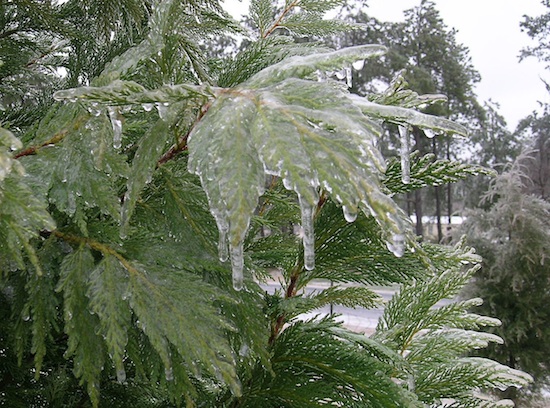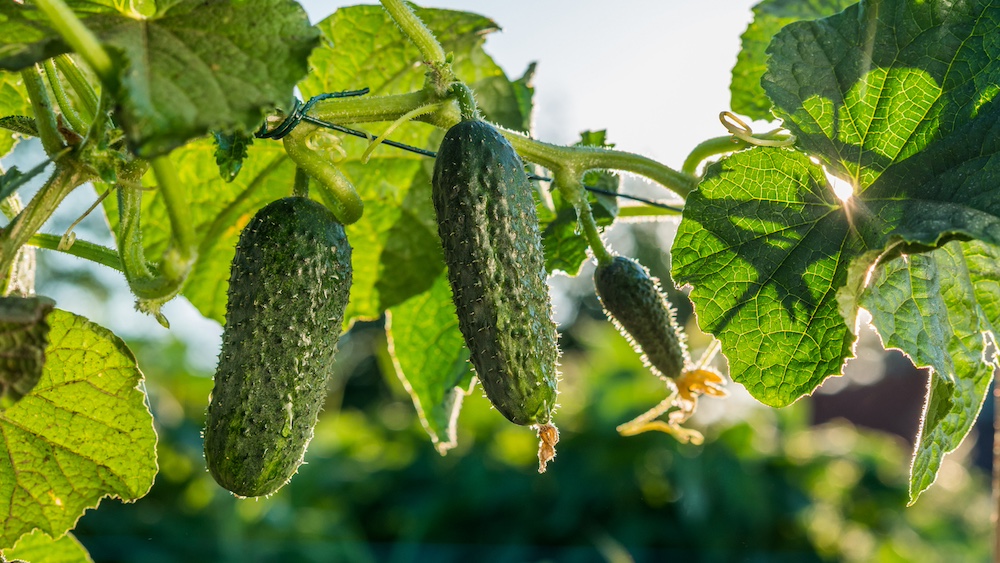To help protect landscape plants from Georgia’s cold temperatures, University of Georgia Extension experts recommend using plastic, straw and, strangely enough, water.
Cover with sheets or plastic
Covering tender outdoor plants during the winter is not always effective or practical. Covering can help, but only if done right. Improper covering can be worse than no covering at all.
Covers that extend to the ground and do not contact plant foliage can lessen cold injury by reducing radiant heat loss from the plant and the ground. Foliage that touches the cover is often injured because of heat transfer from the foliage to the colder cover.
Examples of coverings include cloth sheets, black plastic and quilts. Remove plastic covers during the day or provide ventilation for trapped heat, as this can damage the plants you worked so hard to save. A light bulb placed under a cover is a simple way to provide extra heat to ornamental plants.
Cover with wheat or pine straw
Wheat straw or pine straw can be scattered loosely over vegetable crops to help protect them. It can probably be left in place during cloudy cold days, but remove it if the next day gets hot. Newspapers and paper towels can also be used to cover plant rows. Sawdust can be applied to cover seedlings, but will probably need to be removed the next day with a leaf blower.
Using water to insulate plants
Watering landscape plants before freezing temperatures arrive can help protect plants. Well-watered soil absorbs more heat during the day than dry soil and will reradiate heat at night. This practice can create a warmer micro climate in your planting beds, raising the night time temps near plants by as much as two degrees. However, prolonged saturated soil conditions damage the root systems of most plants.
Ornamental plants can be protected during a freeze by sprinkling the plants's themselves with water. Sprinkling water for cold protection helps keep leaf surface temperatures near 32 degrees Fahrenheit.
Latent heat is released when water changes from a liquid to a solid state. So begin sprinkling as freezing temperatures are reached and continue until thawing is completed. Water must be evenly distributed and supplied in ample quantity to maintain a film of liquid water on the foliage surfaces.
Keep in mind this may mean leaving the water on all night. Alternatively, someone may have to stay awake to determine when to turn the water on and off. Place an accurate thermometer near the plant that is to be protected, not on the house six or more feet above the ground.
Irrigating for several days may soak the soil resulting in damaged root systems and plant breakage due to ice build up. After the freezing temperatures have passed, check the plants’ water needs. The foliage may lose water vapor on a sunny day after a freeze while water in the soil may be unavailable to the plant because it remains frozen. Apply water to thaw the soil and provide available water for the plant.
Recovering from the freezeDelay severely pruning plants until new growth appears to ensure live wood is not removed. Dead, unsightly leaves may be removed as soon as they turn brown after a freeze if a high level of maintenance is desired. New growth and young branch tips may be damaged while older wood is free of injury. Cold injured wood will be black or brown and can be found by examining the cambium layer (food conducting tissue) under the bark. Prune cold injured branches behind the point of discoloration.
Visit http://www.caes.uga.edu/publications for more information about landscape care in Georgia.








